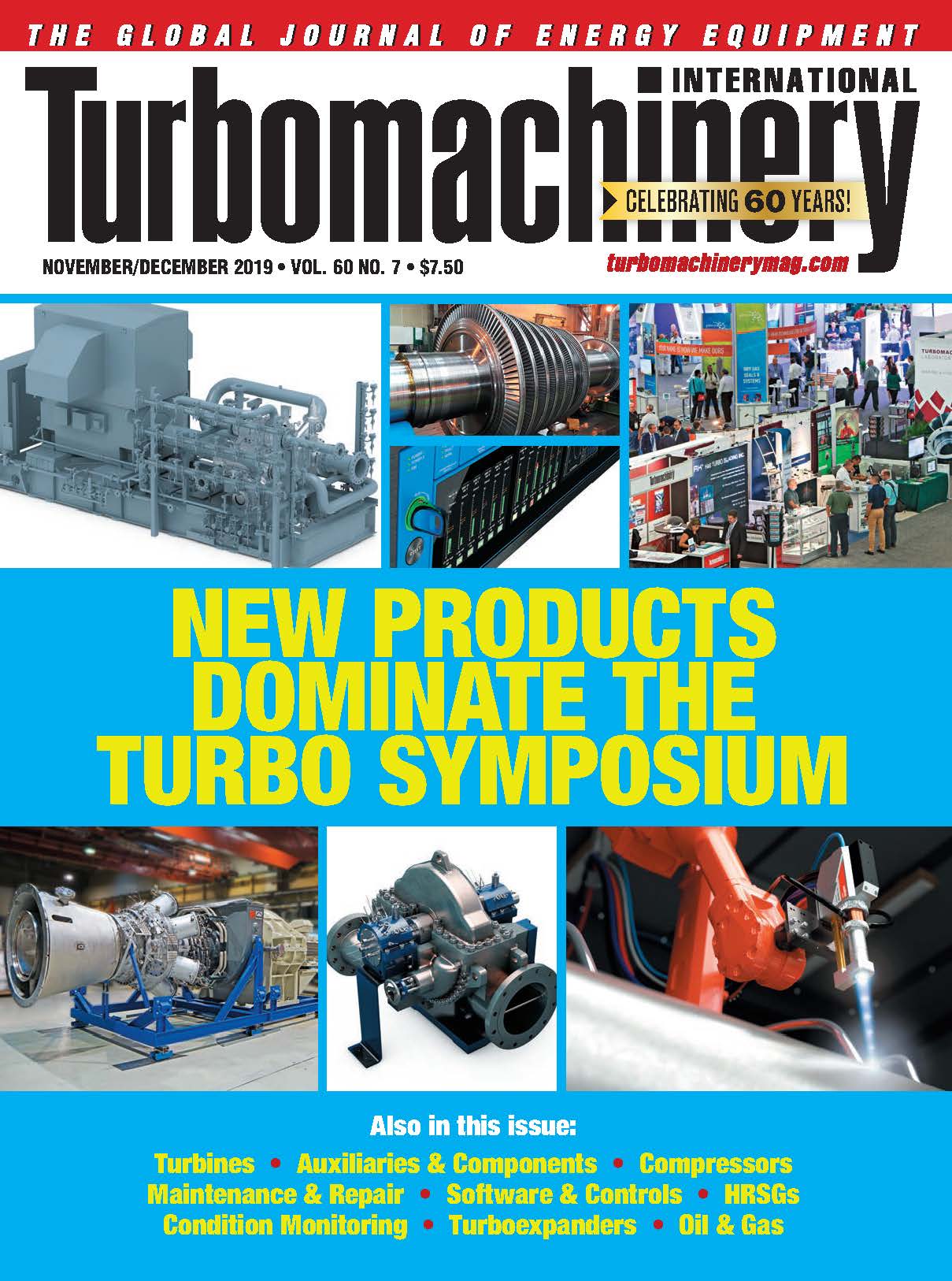How to use your turboexpanders in energy recovery
BY FREDDIE SARHAN
Cutaway model of the Calnetix FreeSpin Inline Turboexpander

Natural gas from producing wells and storage facilities is typically pressurized to facilitate efficient transportation in pipelines across long distances. The pressure is stepped down at pressure letdown (PLD) stations at various stages across the network.
The PLD station depressurizes the gas to lower levels for safe delivery through local distribution networks such as local gas mains, smaller-diameter service lines and individual meters for industrial, commercial and residential end users. Pressure reduction is most commonly accomplished through the installation of Joule-Thomson (JT) regulating valves, which reduce the gas pressure to the desired level.
It consists of a mechanical valve, which is throttled to create the desired pressure differential between the inlet and outlet The JT PLD device is a simple and generally effective tool for pressure reduction, but a by-product is waste heat. A turboexpander and generator can be used to capture this waste energy.
The turboexpander generator reduces gas pressure and converts the resulting kinetic energy into electrical energy, which can be sold to the grid. Turboexpanders have been successfully deployed for energy recovery in air separation, refineries, geothermal power recovery, steam pressure letdown stations, turbochargers and gas turbine waste heat recovery, as well as in nitrogen, helium and hydrogen liquefaction.
However, such systems have had difficulty in attaining viability for natural gas PLD applications due to capital costs and operating expenses. Traditionally, the turboexpander uses a large gear box to adjust the speed of the expander turbine, which is coupled to a synchronous generator. It requires a lubrication system that includes an oil reservoir, pump cooler, filters and piping. Seals are needed to separate the lubricant from the high-pressure natural gas to prevent contamination. The lubrication system is the least reliable component in the overall installation, entailing ongoing maintenance. These drawbacks can be largely overcome through the use of new magnetic bearing technologies that eliminate the lubrication subsystem.
An alternate turboexpander system is known as the FreeSpin Inline Turboexpander (FIT). The hermetically sealed unit consists of an integrated high-speed turboexpander and a permanent-magnet generator, both driven by a single spinning rotor levitated on non-contact magnetic bearings. The direct-drive, permanent- magnet generator has variable speed and load capabilities and can run at rated speeds up to 30,000 rpm. The flow of the natural gas is used to cool the stator, rotor and magnetic bearings.
Since moving parts do not come into direct contact, there are no friction losses. No auxiliary lubrication system is needed. This eliminates risk of oil contamination, provides a smaller footprint and lower installation and maintenance costs.
The FIT works as follows:
1. The pre-heated high-pressure gas flows into the turboexpander
2. The gas expands through the radial turbine wheel
3. The low-pressure gas exits the turboexpander and is ready for flow into the distribution and delivery network for end users
4. The energy wasted during the pressure reduction process is recovered by the turboexpander and converted to electrical power
5. Any excess high-pressure gas not directed through the turboexpander is expanded by the conventional Joule Thomson pressure regulator, which is installed in parallel with the turboexpander
6. The produced electricity enters the Vericycle Bi-directional Power Electronics Unit, which can be programmed to specific power requirements.
Pressure drop is often accompanied by a temperature drop, and this can cause vapor condensation. As a result, the FIT system can include an inlet heating source (i.e., waste heat recovery). The flow through architecture of this system is scalable to approximately 500 kW.
Collaborating with Baker Hughes, a prototype 300 kW unit was built and tested at a PLD station in Bologna, Italy. The unit is designed for a life of over 10 years without maintenance. Based on preliminary data, Baker Hughes projects an estimated potential energy recovery of over 1.6 million kWh per year. ■
Freddie Sarhan is Vice President of Business Development at Calnetix Technologies, the developer of the FreeSpin In-line Turboexpander with many years of experience in turbomachinery and industrial ORC heat recovery systems. For more information, visit https://www.calnetix.com/
